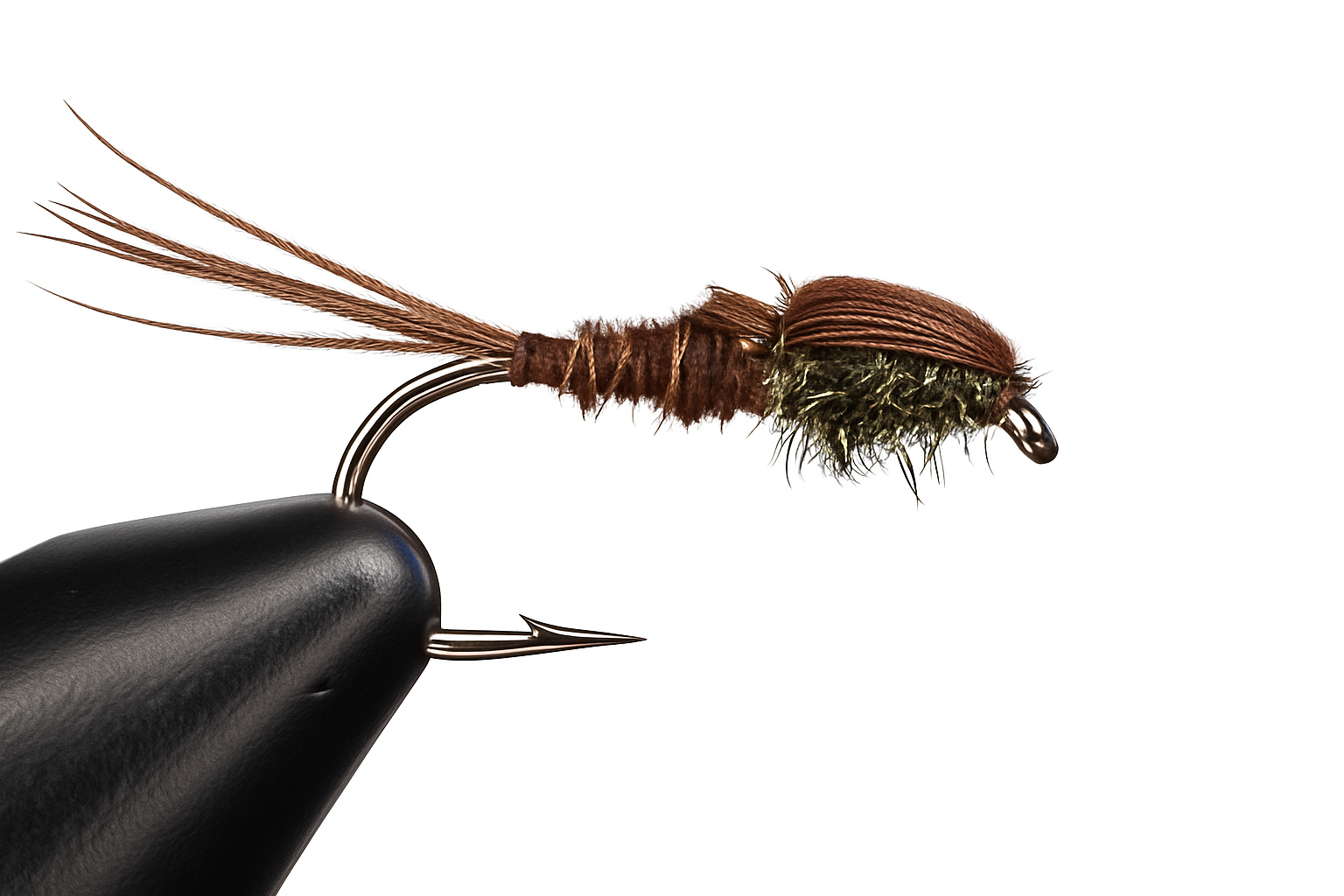5 Essential River Patterns for Autumn Brown Trout
Posted by James on 19th Sep 2025
“Autumn is a season of colour and anticipation. The air is crisp, the banks are golden, and the trout are hungry.”

Autumn in UK rivers isn’t just beautiful, it’s the prime time for brown trout. As water cools, insect hatches change, and trout shift their feeding patterns, many anglers find themselves second-guessing which flies to tie on. Use the wrong patterns, and you’ll bank more frustration than fish. Use the right ones, and you’ll turn crisp mornings and golden banks into unforgettable days on the water.
In this post, I’ll walk you through 5 essential river fly patterns for autumn brown trout: why they work now, how to fish them, and the tweaks that really make a difference. Whether you’re heading out at first light, fishing tight runs, or covering deep water, these patterns will prepare you for whatever the season throws your way.
1) Pheasant Tail Nymph (PTN)

Origin: Frank Sawyer, Hampshire Avon, 1950s.
A slim, understated nymph that imitates small Baetis and other mayfly nymphs. Deadly in riffles and glides during autumn afternoons.
Hook: Trout Hooks (Size 16–20)
Tail & Body: Cock Pheasant Centre Tails
Rib: Fine Copper Wire
Thorax (optional): Peacock Herl
Bead (optional): Tungsten/Brass Beads
How to Fish: Drift naturally under an indicator or as part of a two-nymph rig.
Quick Tip: Keep the body slim — a sparse PTN sinks faster and fools more trout.
2) Parachute Adams
Origin: Leonard Halladay, 1922 (Michigan, USA). Parachute style added later for visibility.
Perhaps the most versatile dry fly ever tied, imitating a wide range of mayflies and midges.
Hook: Trout Hooks
Tail & Hackle: Chicken Feathers / Hackle (Grizzly + Brown)
Post: Calf Body Hair (White)
Body: Grey Dubbing
How to Fish: Target rising fish in glides and pools, especially late afternoon.
Quick Tip: Grease 12–18 inches of tippet to reduce micro-drag.
3) Elk Hair Caddis
Origin: Al Troth, Montana, 1957.
A buoyant, versatile caddis imitation that also doubles as a searching dry.
Hook: Trout Hooks
Wing: Elk Hair
Hackle: Chicken Feathers (Brown/Grizzly)
Body: Dubbing (Tan/Olive)
Rib (optional): Fine Gold Wire
How to Fish: Excellent in riffled water — skate or twitch it across the surface.
Quick Tip: In the evening, try skating across currents — trout can’t resist.
4) Hare’s Ear Nymph (GRHE & Variants)
Origin: 19th-century England; widely attributed to James Ogden or David Hemming.
One of the most famous “buggy” nymphs, imitating a wide range of food items.
Hook: Trout Hooks
Tail & Body: Hare’s Mask or Hare Dubbing
Rib: Gold Wire
Wingcase (optional): Turkey Quill
How to Fish: Dead-drift close to the bottom in runs and glides.
Quick Tip: Tease out thorax fibers for realistic legs — “buggy” sells it.
5) Woolly Bugger
Origin: Russell Blessing, Pennsylvania, 1967.
A streamer that covers countless bases: leeches, fry, dragonfly nymphs, even small baitfish.
Hook: Trout Hooks (Size 6–10, long shank)
Tail: Marabou
Body: Chenille / Fritz
Hackle: Chicken Feathers (Palmered)
Head (optional): Brass/Tungsten Cones or Beads
How to Fish: Swing it across current, strip it back, or use a down-and-across presentation.
Quick Tip: Pause at the hang — many strikes come right before you lift.
? Quick Autumn Tips
- After rain, size up one fly and add a touch of flash.
- Use long leaders (12–14 ft) for dries; shorter for streamers.
- Copper ribs both segment bodies and strengthen fragile hackle.
- If fish refuse dries, trim hackle underside for a subtler footprint.






